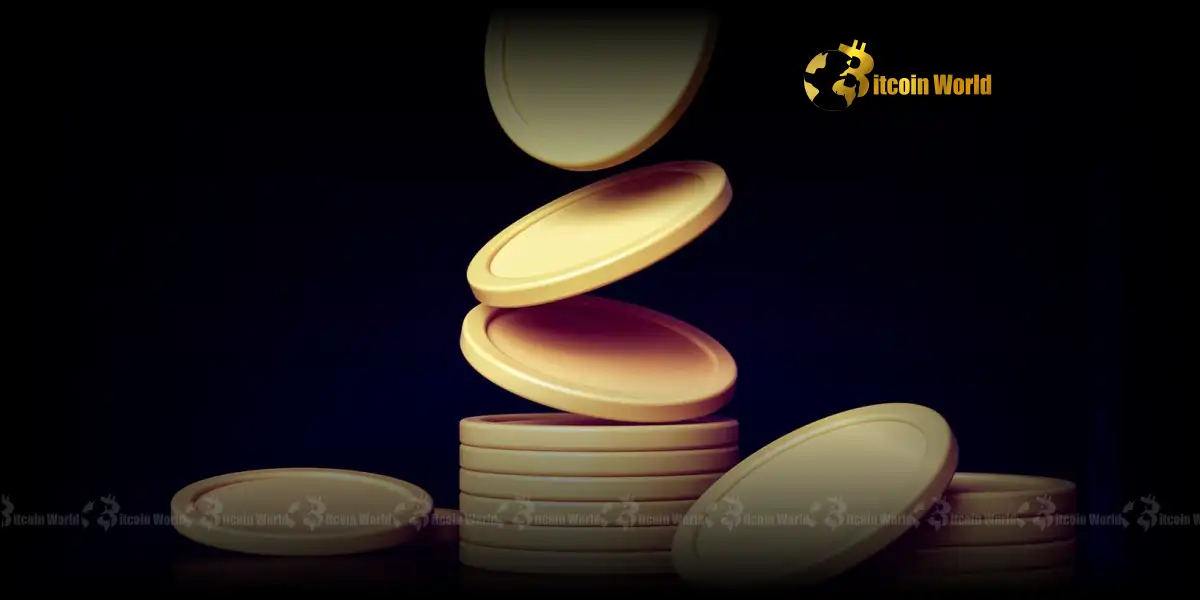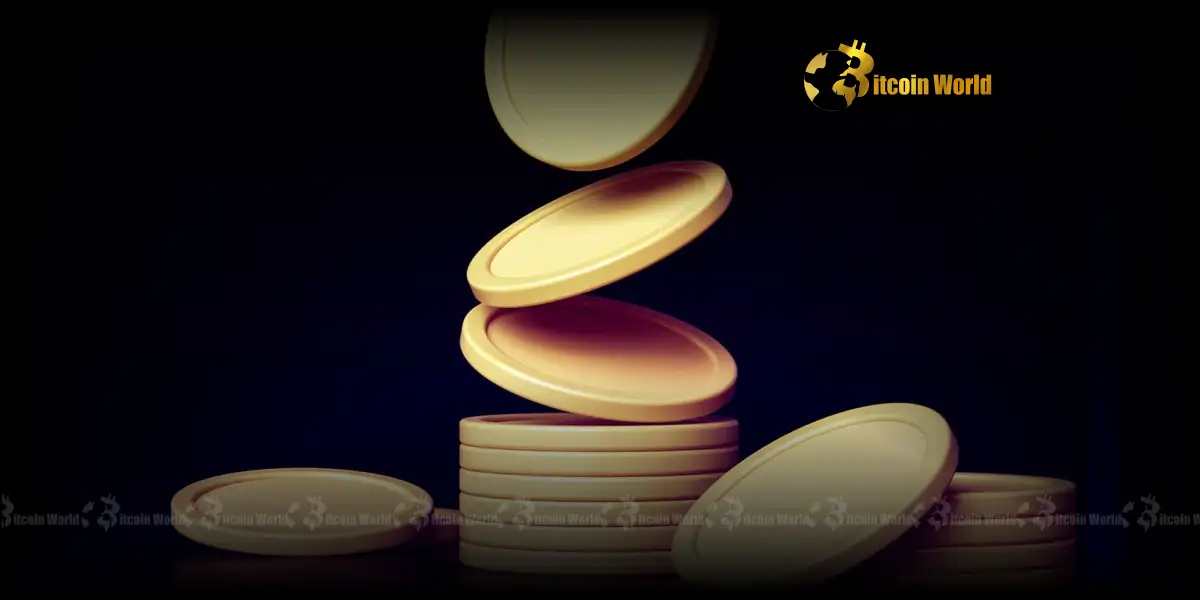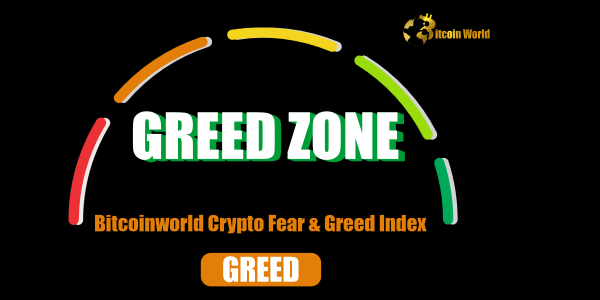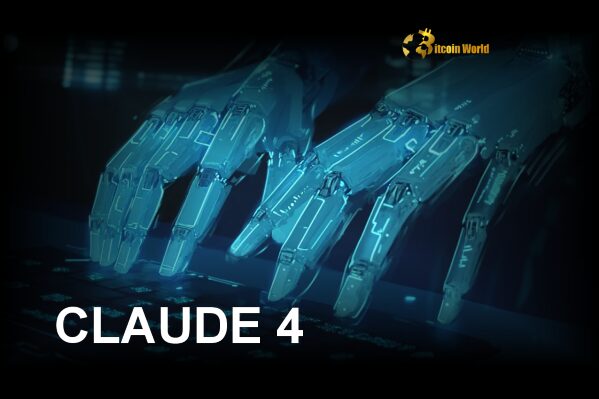BitcoinWorld

Tokenized Money Market Fund: ChinaAMC Unveils a Revolutionary Leap in Digital Finance
In a move that’s sending ripples across the global financial landscape, China Asset Management’s (ChinaAMC) Hong Kong arm has just made history. Imagine a world where your investments are not just digital, but also more accessible, transparent, and efficient. That future is becoming a reality with the launch of the world’s first RMB-denominated tokenized money market fund. This isn’t just a technical achievement; it’s a profound statement about the direction of modern finance and a significant step forward for digital finance globally.
What’s ChinaAMC’s Bold Move All About?
ChinaAMC, a prominent name in asset management, has taken a giant leap into the realm of digital assets. Their Hong Kong arm has not only launched the pioneering RMB-denominated tokenized money market fund but also Asia’s first tokenized U.S. dollar MMF. This dual launch signifies a strategic push into the rapidly evolving digital asset space, offering investors new avenues for liquidity and potentially higher efficiency.
Traditionally, money market funds (MMFs) are considered low-risk investment vehicles that focus on short-term debt instruments. They are popular for their stability and liquidity, often used as a safe haven for cash. By tokenizing these funds, ChinaAMC is essentially converting traditional fund units into digital tokens on a blockchain. This process introduces several exciting possibilities:
- Enhanced Liquidity: Tokens can be traded 24/7 on compatible platforms, potentially offering greater liquidity than traditional fund units.
- Increased Transparency: Blockchain technology provides an immutable and transparent record of ownership and transactions.
- Lower Costs: Automating processes through smart contracts can reduce administrative overheads and transaction fees.
- Fractional Ownership: Tokens can represent smaller units of the fund, making investments more accessible to a wider range of investors.
Unpacking the Power of the Tokenized Money Market Fund
The concept of a tokenized money market fund is at the forefront of financial innovation. It merges the stability and regulatory oversight of traditional MMFs with the cutting-edge capabilities of blockchain technology. Think of it as taking a trusted financial product and supercharging it with digital efficiency. For investors, this could mean faster settlements, reduced counterparty risk, and a more seamless investment experience.
Here’s a closer look at what tokenization brings to MMFs:
- Programmability: Smart contracts can automate various fund operations, such as dividend distribution, redemptions, and compliance checks, reducing manual errors and increasing speed.
- Interoperability: Tokenized assets can potentially be integrated with other decentralized finance (DeFi) protocols, opening up new use cases and composability.
- Accessibility: By lowering the barrier to entry through fractional ownership and digital access, tokenized MMFs can democratize access to institutional-grade financial products.
While the underlying assets remain traditional short-term debt instruments, the wrapper – the digital token – is revolutionary. It’s a bridge between the old and the new, aiming to provide the best of both worlds.
Why is an RMB-Denominated MMF So Significant?
The launch of the world’s first RMB-denominated tokenized MMF carries immense significance, particularly for China’s digital currency ambitions. China has been a leader in central bank digital currency (CBDC) development with its digital yuan (e-CNY). This tokenized MMF could potentially complement the e-CNY ecosystem, offering a new investment avenue for digital RMB holders.
Consider these implications:
- Internationalization of RMB: Providing a tokenized, highly liquid RMB investment product could boost the international use and appeal of the Chinese currency in the digital age.
- Institutional Adoption: The backing of a major asset manager like ChinaAMC lends credibility and could pave the way for broader institutional adoption of digital assets and tokenized securities in Asia and beyond.
- Pioneering Digital Asset Ecosystems: This move positions Hong Kong, and by extension China, as a key player in shaping the future of digital asset markets, especially those tied to fiat currencies.
It demonstrates a clear commitment to integrating traditional finance with cutting-edge blockchain technology, potentially setting a precedent for other major currencies to follow suit.
The Broader Landscape: How This Shapes Digital Finance
This development by ChinaAMC is not an isolated event; it’s part of a larger, global trend towards the tokenization of real-world assets. The convergence of traditional financial products with blockchain technology is reshaping the landscape of digital finance. From real estate to commodities, and now money market funds, more assets are being brought onto the blockchain, promising greater efficiency and accessibility.
This trend is driven by several factors:
- Technological Maturity: Blockchain infrastructure is becoming more robust and scalable, capable of handling complex financial transactions.
- Regulatory Evolution: While still nascent, regulators worldwide are beginning to develop frameworks for digital assets, providing more clarity and confidence for institutional players.
- Investor Demand: A growing segment of investors, both retail and institutional, are seeking exposure to digital assets and the benefits they offer.
The tokenization of MMFs could serve as a template for other regulated financial products, accelerating the transition to a more digitally native financial system. It underscores the idea that digital assets are not just about cryptocurrencies, but about fundamentally improving how traditional financial instruments are created, managed, and traded.
Navigating the Future: Challenges and Opportunities in Blockchain Innovation
While the launch of these tokenized MMFs is undoubtedly a milestone, the path forward for blockchain innovation in traditional finance is not without its challenges. Regulatory clarity remains paramount. Different jurisdictions have varying approaches to digital assets, and a harmonized global framework is still a distant goal. Scalability of blockchain networks and the need for robust cybersecurity measures are also critical considerations.
However, the opportunities are immense:
- Increased Efficiency: Streamlining back-office operations, reducing settlement times from days to minutes or even seconds.
- New Business Models: Enabling innovative financial products and services that were not possible with traditional infrastructure.
- Enhanced Risk Management: Leveraging blockchain’s transparency for better auditing and compliance.
- Global Accessibility: Facilitating cross-border transactions and investments with greater ease and lower costs.
ChinaAMC’s initiative serves as a powerful case study, demonstrating that with careful planning and regulatory engagement, the benefits of blockchain can be harnessed to revolutionize even the most traditional corners of finance.
Conclusion: A Glimpse into Tomorrow’s Investments
The launch of ChinaAMC’s RMB-denominated and USD tokenized money market funds marks a pivotal moment in the evolution of finance. It’s a testament to the transformative power of blockchain technology and a clear signal that the future of investments is increasingly digital. By combining the stability of traditional MMFs with the efficiency and transparency of tokenization, ChinaAMC is not just creating new products; they are helping to build the foundational layers of a more interconnected, efficient, and accessible global financial system. This groundbreaking step will undoubtedly inspire further innovation and adoption, paving the way for a truly digital financial future.
To learn more about the latest digital finance trends, explore our article on key developments shaping blockchain innovation and institutional adoption.
This post Tokenized Money Market Fund: ChinaAMC Unveils a Revolutionary Leap in Digital Finance first appeared on BitcoinWorld and is written by Editorial Team





